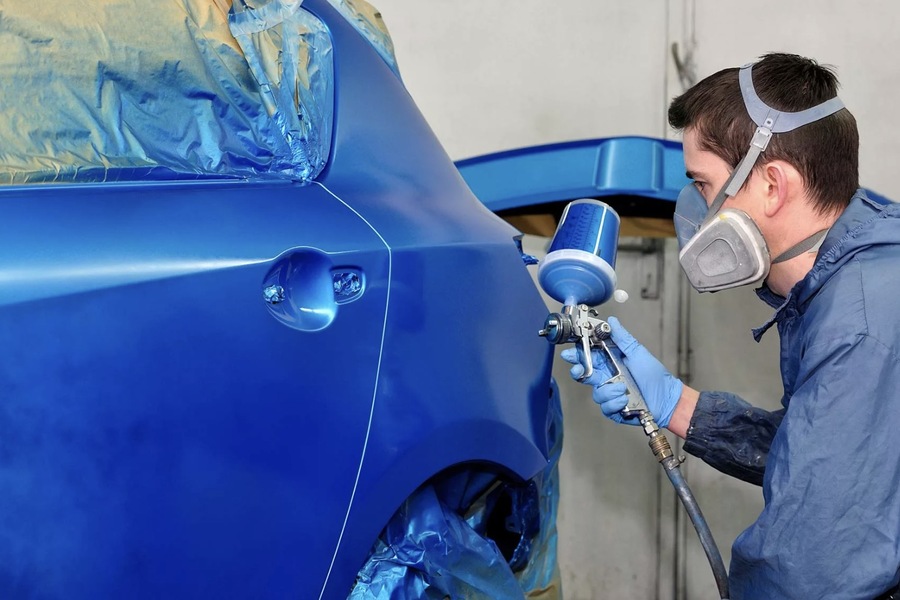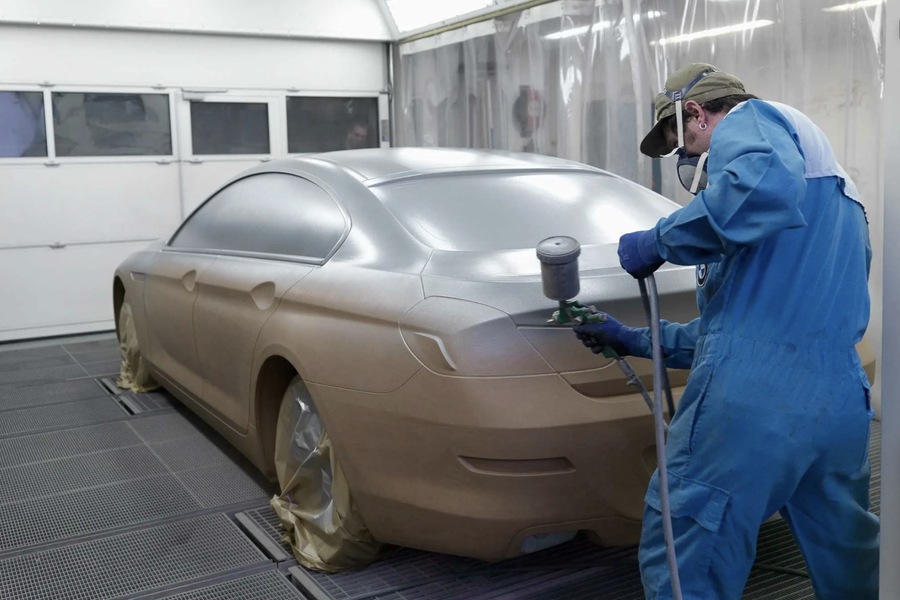For many car enthusiasts, a vehicle’s paintwork is a reflection of meticulous care and attention, a source of pride, and a measure of the vehicle’s overall condition. The appearance of the car’s exterior often hints at its upkeep and serves as a mark of status. Unfortunately, even the most carefully maintained paintwork cannot escape the toll of time, usage, and environmental exposure. Over the years, minor scratches, chips, and rust can appear, causing a slow decline in the paint’s original sheen and luster. This wear and tear not only diminishes the car’s appearance but can also hint at underlying issues with corrosion if not addressed promptly. Ziebart specializes in advanced paint protection solutions, making it easier for car owners to combat these signs of aging and keep their vehicles looking pristine.
While modern waxes and ceramic coatings can help protect and prolong the life of a car’s paint, these solutions alone may not be enough to maintain the vehicle’s look over the years. This is where clay paint restoration steps in as an effective and efficient way to preserve and rejuvenate the paintwork. In this guide, we’ll explore the detailed process of using clay for paint restoration, its significant benefits, how frequently it should be done, and why professional services like those offered by Ziebart can be a valuable resource for car owners.
Understanding Clay Paint Restoration: What It Is and Why It’s Important
Clay paint restoration is a specialized car detailing process that uses a malleable, synthetic material—commonly known as detailing clay—to remove contaminants embedded in the surface of the paint. These contaminants, which include dust, sap, tar, road grime, and even microscopic bits of metal from brake dust, are resistant to regular washing. They lodge in the paint’s surface over time, leading to dullness, rough texture, and an overall diminished appearance. Detailing clay is formulated to grab onto these particles without affecting the underlying paint, allowing for a thorough yet gentle cleanse.
A key advantage of clay treatment is that it does not strip any layers of paint. Instead, it lifts dirt and grime from the surface, preserving the original thickness of the paint while enhancing its gloss. Detailing clay is typically used with a lubricant spray or a soapy solution, which helps it glide over the paint, minimizing the risk of scratching and maximizing the clay’s effectiveness.

The Step-by-Step Process of Clay Paint Restoration
While clay treatment may seem straightforward, following a precise and methodical process is essential to achieving the best results. Here is a breakdown of each stage in the clay restoration process:
1. Preliminary Washing and Drying
Before clay is applied, the car must be thoroughly washed and dried to remove loose dirt and dust particles that may otherwise cause scratches during the clay application. This preliminary step also extends the life of the clay by preventing unnecessary contamination. Washing ensures that only the deeply embedded particles remain on the surface, setting the stage for an effective clay treatment.
2. Preparing the Clay
After washing, the clay bar should be removed from its container and kneaded by hand until it becomes soft and malleable. This step is essential to make the clay more pliable and allow it to conform to the contours of the car’s surface. Before beginning, spray a lubricant—usually a special detailing spray or thick soap solution—onto both the clay and the car’s paintwork. The lubricant ensures a smooth glide, reducing friction between the clay and the surface and protecting the paint.
3. Treating the Surface
With the clay bar prepped and lubricated, begin treating the car’s surface in small sections. Using gentle, circular motions, glide the clay over the area being cleaned. Avoid pressing too hard, as the clay should naturally attract and lift particles. As the clay picks up dirt, it will need to be kneaded periodically to expose a clean section. This ensures that the clay remains effective and doesn’t redistribute contaminants back onto the paint.
4. Finalizing the Cleaning Process
Once the entire car has been treated with clay, the paint should be sealed to lock in its renewed cleanliness and shine. Applying a coat of wax or a ceramic nano-coating will create a barrier between the paint and environmental contaminants. This protective layer not only enhances gloss but also reduces the rate at which the paint becomes soiled, keeping the car looking new for longer.
Benefits of Using Clay for Paint Restoration
The advantages of using clay for paint restoration go beyond aesthetics. Here are some of the top benefits that clay treatment offers:
Efficient Contaminant Removal
Detailing clay is formulated to pick up stubborn contaminants such as tree sap, road tar, brake dust, and industrial pollutants. These residues often resist regular washing and can accumulate over time, making clay an effective solution to remove deeply ingrained particles that regular washing cannot.
Enhanced Gloss and Shine
By removing grime that causes dullness, clay restoration can significantly improve the car’s appearance. The process restores the original shine, helping the paint appear fresh and reflective, almost like a new coat.
Extended Paint Longevity
Routine clay treatments, combined with wax or sealants, help protect the paint by minimizing contamination build-up. This slows down the aging process of the paintwork, effectively extending the lifespan of the paint and reducing the risk of corrosion.
Cost Savings on Repainting
Over time, neglecting contaminants on the paint can lead to deterioration and potential repainting costs. Regular clay treatment is a preventive measure that can save on extensive repainting expenses, making it an economical choice for car owners.
Precision Cleaning for Difficult Areas
Thanks to its malleable texture, detailing clay can be shaped to reach into crevices and difficult areas, such as around trim, emblems, and the underside of side mirrors. This flexibility ensures comprehensive coverage that many other cleaning methods cannot achieve.
Signs of Effective Clay Treatment
To gauge the effectiveness of a clay treatment, look for the following indicators:
1. Tactile Feedback
When initially applied, the clay may drag slightly as it encounters contaminants embedded in the paint. As it works to remove them, the clay will start to glide more smoothly, indicating a clean surface. The paint should feel velvety smooth to the touch once treatment is complete.
2. Visual and Physical Comparison
After treatment, the difference is often apparent both visually and by touch. Running your hand over the paint will reveal a smooth, glass-like finish free from rough patches. Visually, the paint will have a restored, glossy shine.
How Often Should You Clay Your Car?
The frequency of clay treatment depends on various factors, including climate, parking conditions, and the car’s exposure to environmental elements. Here’s a general guideline:
Cars Stored Outdoors
Cars that are frequently parked outside accumulate more contaminants from road dust, tree sap, and air pollutants. It is recommended to perform clay treatment about four times per year, especially for vehicles exposed to harsh outdoor conditions.
Garage-Stored Cars
Vehicles stored in garages are better shielded from environmental pollutants and may only need clay treatment once or twice per year.
Based on Contamination Level
For car owners who are unsure, a tactile check can reveal if clay treatment is needed. After washing, if the surface still feels rough or shows cloudiness, it may be time for clay restoration.
When to Consider Professional Clay Treatment Services
While clay treatment can be done as a DIY project, many car owners prefer professional services to ensure thorough and safe application. In the UAE, Ziebart offers premium detailing services, including clay paint restoration, to maintain your vehicle’s finish with a high standard of quality. Their professional technicians have extensive experience with clay treatments, ensuring every inch of your car is meticulously cleaned and protected.
Benefits of professional clay treatment include:
Use of High-Quality Products
Professionals use specialized clays and lubricants from reputable manufacturers, guaranteeing effective contaminant removal without the risk of scratching.
Precision and Speed
Experienced detailers can complete the process with accuracy and efficiency, saving you time while ensuring optimal results.
Comprehensive Care and Protection
Ziebart’s detailing packages often include follow-up services like waxing and ceramic coatings, which add extra layers of protection to your newly restored paintwork.

Key Considerations for DIY Clay Treatment
If you decide to perform clay treatment on your own, keep these tips in mind to prevent damage:
1. Use Ample Lubrication
Insufficient lubrication can cause the clay to stick and potentially scratch the paint. Be generous with lubricant spray, as it is essential for the clay to glide smoothly.
2. Replace or Knead the Clay Often
As the clay becomes dirty, contaminants can scratch the paint. Continuously knead the clay to expose a clean side, or replace it if it becomes overly soiled.
3. Follow Up with a Protective Coating
After cleaning with clay, it’s important to apply a wax or sealant to protect the freshly cleaned paint. This step helps maintain the smoothness and prevents rapid accumulation of new contaminants.
4. Avoid Excessive Pressure
Allow the clay to do the work. Applying too much pressure can scratch the surface and diminish the clay’s effectiveness.
In Summary: Enhancing and Preserving Your Car’s Paintwork
Using clay for paint restoration is an efficient and effective way to maintain the luster of your car’s exterior. It’s a highly beneficial process for those looking to protect their investment and keep their vehicle in pristine condition. From lifting difficult contaminants to restoring shine, clay treatment is an essential part of a vehicle’s maintenance routine. Whether performed as a DIY project or by professionals like Ziebart, clay restoration helps preserve the car’s appearance and minimizes the need for costly repainting.
In the long term, regular clay treatments combined with protective coatings contribute to your car’s aesthetic appeal and resilience, giving you peace of mind and pride in your vehicle’s appearance. For drivers in Dubai, Abu Dhabi, and the UAE, Ziebart’s specialized clay paint restoration services offer unparalleled care, helping you keep your vehicle looking as sleek and polished as the day it was first driven off the lot.

I am inspired daily by my husband and their two daughters. In my free time, I like to go hiking, crochet and play video games with my grandson.
